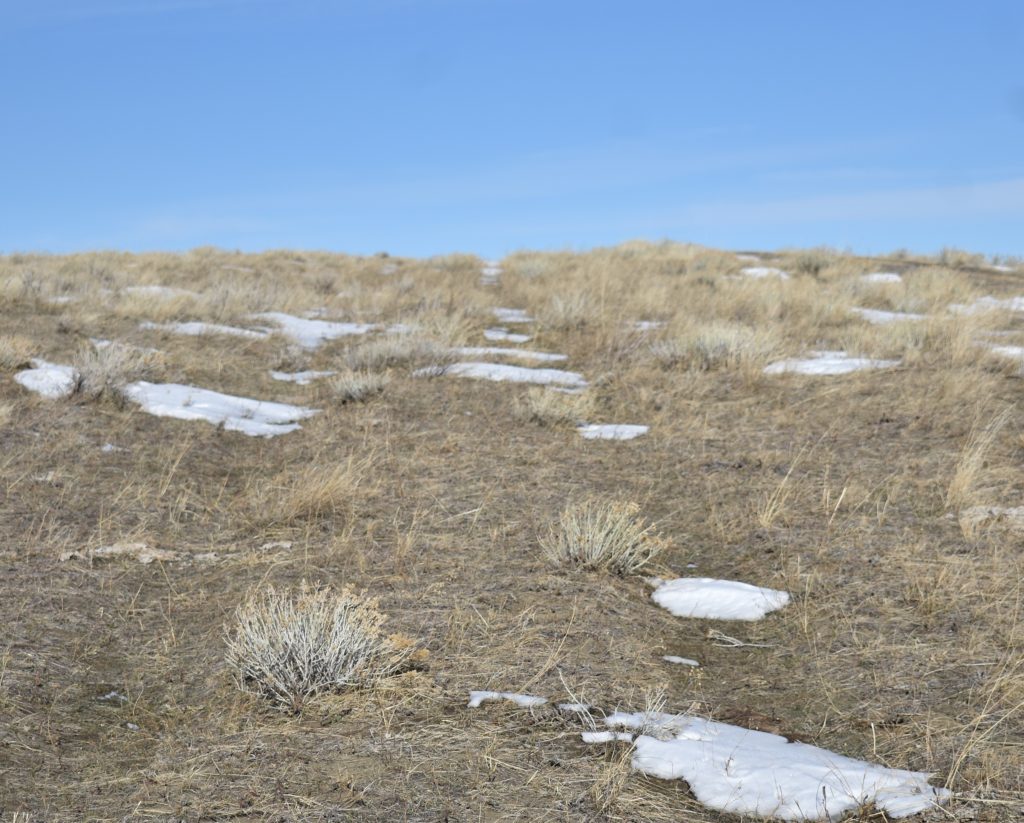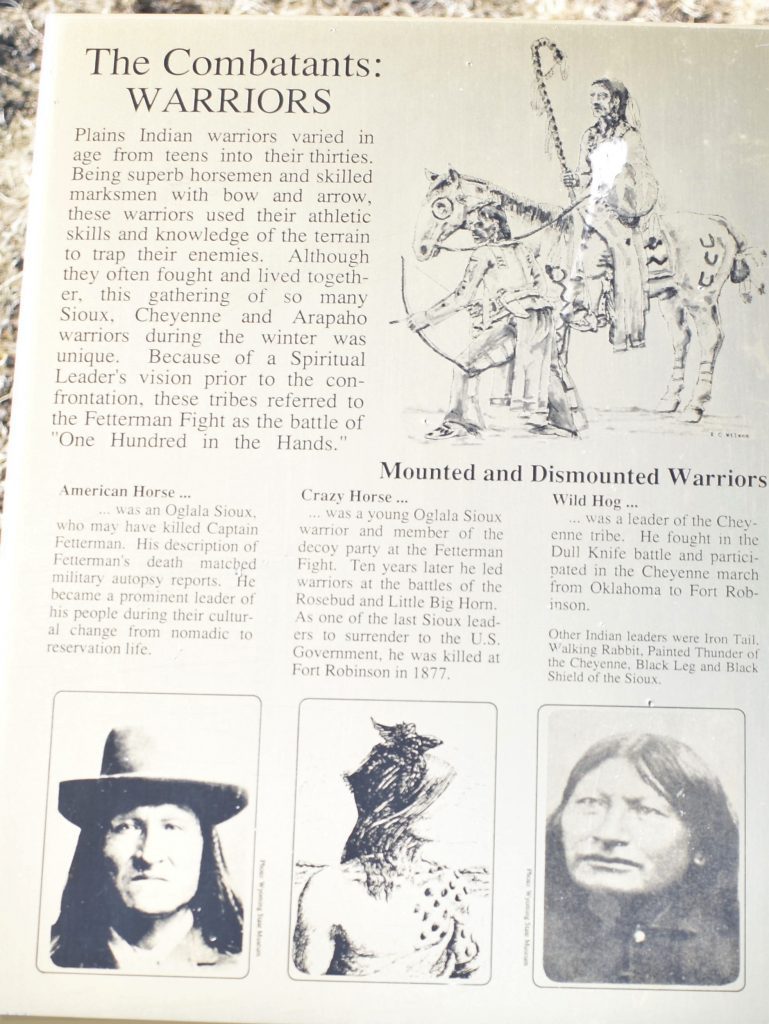News
Fetterman Battlefield Tour Draws Crowd on Tuesday

Historian Bob Wilson with the Kearny Frontier Regulars
The Fetterman Fight, also called the Battle of a Hundred Slain by the Sioux, was fought on Dec. 21, 1866. On Dec. 21, 2021, Fort Phil Kearny and the Bozeman Trail Association hosted the annual tour of the battlefield with historian Bob Wilson and weapons demonstrations by Kearny’s Frontier Regulars.
The day was warm and sunny, and over 20 people attended the three-hour tour, which included a mile-long hike to look over the battlefield. The group met at the Interpretive Center at Fort Phil Kearny and Wilson gave a talk about the background of the fort, and the events that led up to the battle. Wilson said that the fort looked pretty close to the one portrayed in diorama at the time, although it went through many changes. At one time there were 350 soldiers. Included in the buildings were infantry barracks and cavalry barracks, officers’ quarters, and sutler’s store. There were around 200 civilian employees.

When Col. Henry Carrington got to the fort there was shortage of officers. Carrington himself had never been in battle. William J. Fetterman had led troops into many battles in the Civil War. Fetterman didn’t like Carrington, saying he did not do well at maintaining army discipline and had never been in battle.
During the Civil War, there were many battlefield promotions. After the war, the original ranks were reinstated. Fetterman and Captain Frederick Brown both had higher ranks during the Civil War and they wanted their ranks back and wanted to kill Indians, for who they had little esteem.
Unfortunately on Dec. 21, that didn’t happen. He and all 80 men were massacred.
Fetterman had made various forays out and the Indians never attacked them. Through the fall they went out and cut wood, and on Dec. 21, they sent out the last wood train of the year. The wagons were driven by unarmed civilians. The orders were to go out and get 20 wagons of wood, finish a bridge near present-day Story, and come back.
The Sioux had a large camp five miles to the north, between what is now Prairie Dog Creek Road and US Highway 14. Indians would send out warriors looking for trouble. There were a number of skirmishes with the soldiers.
The Crow would camp around the fort, and the Cheyenne camped near the fort as well.
The main tribes fighting at Fort Phil Kearny were the Sioux, Cheyenne, and Arapaho. There were two bands of Sioux at the battle. Wilson said that there are seven different bands of Sioux in Eastern Montana, Eastern Wyoming and South Dakota.
The land near the Bighorn Mountains was traditionally Crow land, but the Sioux had pushed them out, so the Crow allied with the Whiteman, hoping to get their land back.
Carrington’s orders were to protect the Bozeman Trail, not to attack the Sioux nation. But on Dec. 6, Fetterman went on offense instead of defense. Captain Brown and Lieutenant George W. Grummond wanted to attack the Indians. Fetterman sent up two groups of mounted infantry, that were armed with Springfield rifles and 50 Cavalry with armed with Star breech loading carbines. They pursued Indians all the way to what is now Tunnel Hill.

Fetterman’s group was ambushed by several warriors. One problem is that the cavalry horses were in poor condition, and the column was not bunched together. The Sioux horses were in better shape, as they were smaller than American horses and were used to living off the land as the eastern horses were not. Bringham and Grummon left Fetterman chasing a small group of Indians. During the skirmish, Bringham was killed. Grummon was surrounded, but he used his saber to break through the Sioux line. This was a precursor of the Fetterman fight, and a way for the warriors to find out what just what their enemy would do.
Carrington had other problems as well. There was a shortage of powder and lead, and Wilson said that letters were sent to Omaha requesting that they send out the necessary ammunition. Many of his recruits were untrained, green newcomers. Instead of training them when they arrived at the fort, they were ordered to built the stockade.

Carrington thought he had a peace treaty with the Sioux, even though Red Cloud had walked out of the Fort Laramie treaty talks, and the United States was still negotiating with the tribes over the right to use the Bozeman Trail. The Sioux told the Army there would be a fight if they continued to move along the trail, and build the forts.
The day of the Fetterman fight, 98 soldiers volunteered to leave the fort and protect the wood train. However, only 49 had serviceable weapons. After the fight, when Fetterman sent soldiers out to bring in the bodies, he barely had enough men to man the fort. He needed reinforcements, and John Portugee Phillips, a civilian at the fort, volunteered to ride to Fort Laramie for help.
Before the group left to tour the battlefield, Wilson opened the floor to questions. One question from the audience was “What was the weather like that day, in 1866?” Wilson had this to say,
Wilson said the coldest tour he did it was 28 below zero. One person came to the tour, but they didn’t walk very far on the battlefield.
One person in the audience, Terry Richards, said he is a descent of some of the Indians who fought in the battle. He commented that the Native Americans hardly even fought in winter, because their horses were weak as well. Knowing this, he said that the cavalry often attacked them in the winter. He said Crazy Horse rode his brother’s horse into battle as his own horse had been shot out from under him in an earlier battle. “We have our own interpretation of the battles. My grandfather was there.”

After the talk at the Fort, the crowd convoyed up to the monument for a tour of the battlefield. The Fort Phil Kearny Regulars, who do reenactments dressed in regulation army dress and using authentic weapons, gave a demonstration of the rifles used in the battle. The black-power weapons made a great deal of smoke when fired, and when enough guns were firing, the smoke created a haze through which it was sometimes difficult to see the targets. Or it provided a smoke screen for the soldiers.
The battlefield tour started at the Fetterman Monument, and there is a mile long trail out the ridge with interpretive signs at various spots along the trail. One can also see the Bozeman Trail tracks that are still visible on the ridge.
Wilson described the battle, pointing out the positions of the skirmishes. Grummond, who led the cavalry, Brown, and two civilians, were a part of Fetterman’s command. All in all there were 27 cavalry and 49 infantry and some civilians, such as James Wheatley and Isaac Fisher, totaling 81 men. Between 800 and 1200 Indians attacked. The battle lasted less than an hour, and was fought mainly on foot rather than on horseback.
Fetterman and all his men were lost in the battle, and estimates of the Native American losses were 130, although Sioux oral history said that only around 20 warriors were lost. At one battle site the burial parties counted 60 bloodstains, which they believed were 60 Indians killed or badly wounded. At another site it was believed that around 60 more were killed.

Te monument stands on the hill where Fetterman made his final stand, and the Fetterman Fight is still remembered over 150 years later.
Coming up at Fort Phil Kearny are the First Day Hikes, starting at 1 pm and 2 pm on January 1. The first hike is an easy one mile hike around the parade grounds, and at 2 pm there will be a more difficult hike up Pilot Knob. Depending on the weather, snowshoes may be useful. Hot drinks and snacks will be provided.
For more information call the Bozeman Trail Association. 307-684-7629


Bob Genereaux
December 23, 2021 at 8:52 am
Conflicting cultures settle the differences with force. The culture that is incompetent at maintaining their borders lose. That culture disappears. The Natives won a few battles but lost the war.